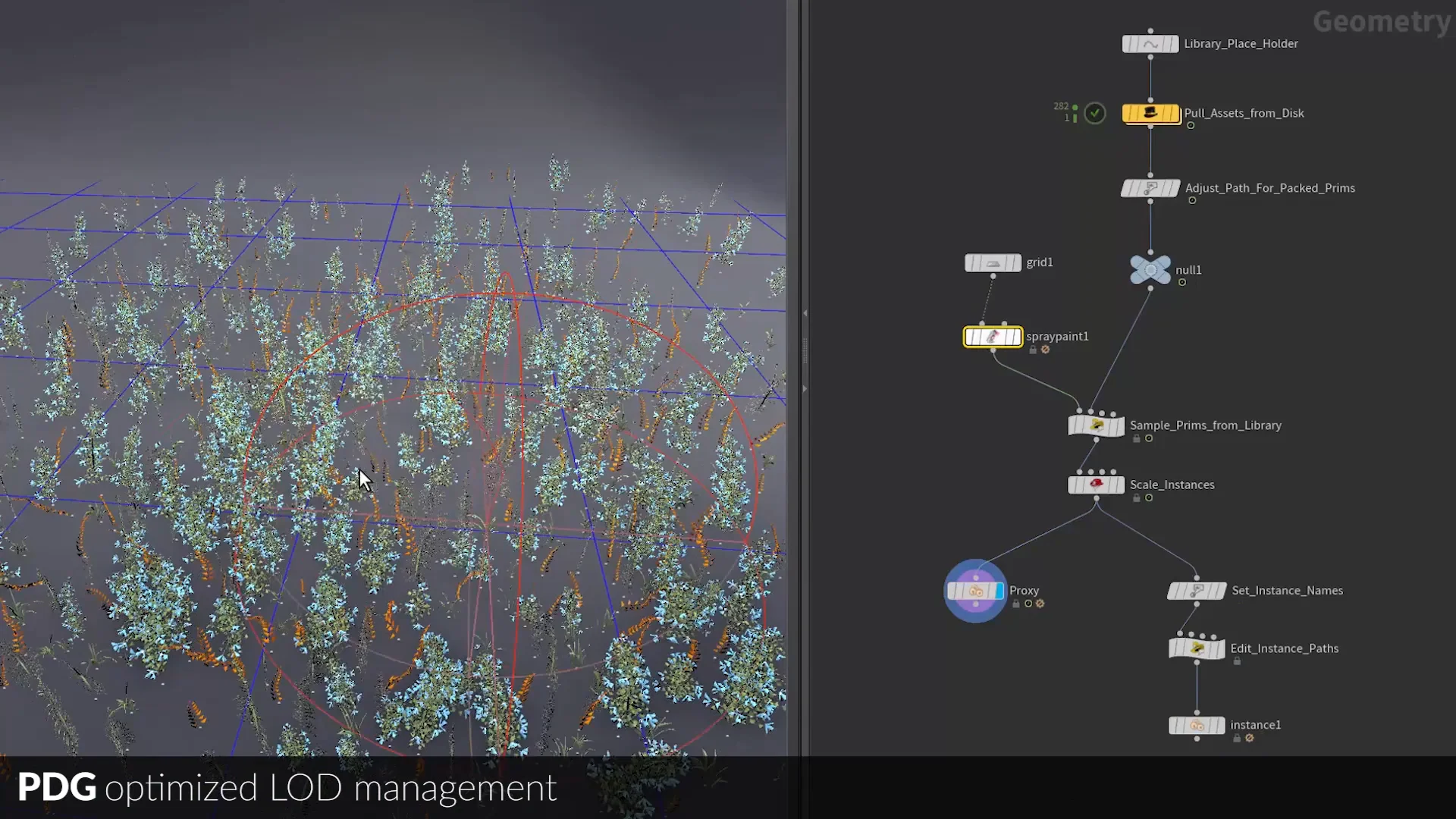hei Houdini man… hem no noting …
???
Impressive release as always. The little I’ve learned about Houdini had me wanting for some similar features in Blender, mostly the custom attribute maps and the solver network where you can write some history-dependant code.
I saw their presentation …
They added machine learning techniques to the nodes, the independent rendering of assets on disc, a sort of cache that greatly speeds up the workflow.
They concentrated all their firepower on the automated construction of open words and asset variants. … what before was modeled by a fleet of trained monkeys, today it is created by artificial intelligences …
These features are a salvation for large movie studios, television and video game houses.
They are working well for their sector, Houdini has many years of experience in procedural construction, Blender will have to go a long way in this.
The two could, would, should perfectly complement each other with a bridge, intermediate engine - to have HDAs working with Blender… to have scene geo apppended/linked from Blender 
No. This is not quite right. They’re using a python node to program machine learning, and using the new TOPs network to generate training data. AFAIK there are no ML nodes out of box (though anyone inclined could certainly do so).
Applying ML to geometry was always possible within the python node, though this is in the same sense as ML being plausible with Blender’s Addon API. TOPs can efficiently automate some of the prerequisites, but in itself is not a ML platform.
Yes, ok, thanks for the clarifications …
But what I wanted to highlight is that they built a working and solid system …
observing a more general thing, they are taking everything that has potential or remain experimental in blender, they take the ideas and make them well functioning and well harmonized … (from what they show in the videos).
They have understood that there can be no competition with blender, on everything that is “low end” … therefore they push very much where only the average studios and the cinematographic houses can arrive …
in the same way … we are about to form a kind of silent twinning … between houdini and blender … as blender itself is also a continuous breeding ground for experimentation … so ideas, designers, developers, etc. … they go through experimentation first … and then for potential big-screen jobs and big investments … where only a few can access …
I hypothesize that in the future, at the system level there will be less and less medium lands in this field …
it is an oroboro where both the big houses and the great mass benefit with the growing of experimentation and experienced work force.
Judging by the language, I think it’s pretty safe to assume that ML/AI tools will start to make their way into Houdini, and ML naturally lends itself to Houdini.
But I don’t think Blender is remotely on SideFX radar, and Blender and Houdini aren’t at all comparable.
I’d also disagree strongly that Blender is a “low end” tool, or that Houdini is delegated to major films.
Houdini is also experimental in nature. Most features are actually collections of existing nodes that can be opened up, rearranged, customized or broken, and I’ve seen academic papers that use Houdini to demonstrate implementation. You can add tools to Houdini simply by packing nodes into an HDA.
In fact, it would be far, far easier to prototype some new technology or implementation in Houdini or HDK than it would be to customize Blender.
I don’t think we need to necessarily say “Blender for this” and “Houdini for that”. Both have their strength and purpose.
I don’t absolutely mean that the two software are competing and neither that blender is “low end” …
I refer to the fact that blender is easily accessible to everyone, it is a software where people are free to expand their creativity, their knowledge and build their bones …
Houdini is a software where you land only if you are already a high level professional …
The two targets are different, and it’s a win-win situation …
Blender, due to its open source nature, is easier to attract creative developers, students and others who experience extending interesting tools …
Houdini, the extensions are more rigid because they must be more solid and more harmonious with the whole system, they are created by professionals of great level … but it is not said that they are able to churn out new ideas … so it is easy that “steal” ideas that are drafts and improve them … this is a winning move … with which Steve Jobs created his greatest inventions … to give an example
blender by nature of continually adding new features, has been more chaotic and only now with blender 2.8 is it being done a nice rearranged and reorganization of its interface and its functionality towards simplification and better harmonization.
man I was one of those monkeys, so it’s an ironic self-comment

